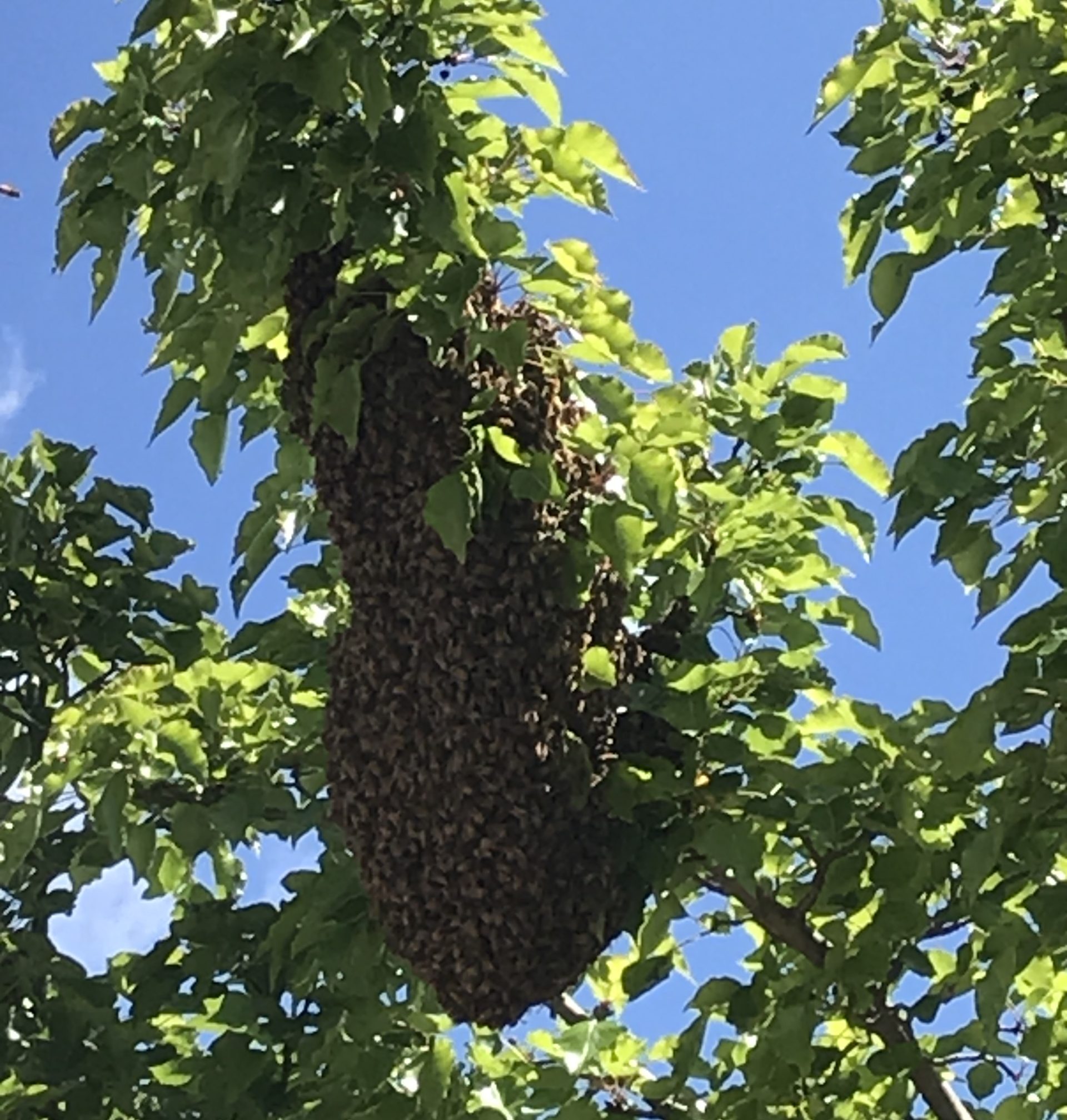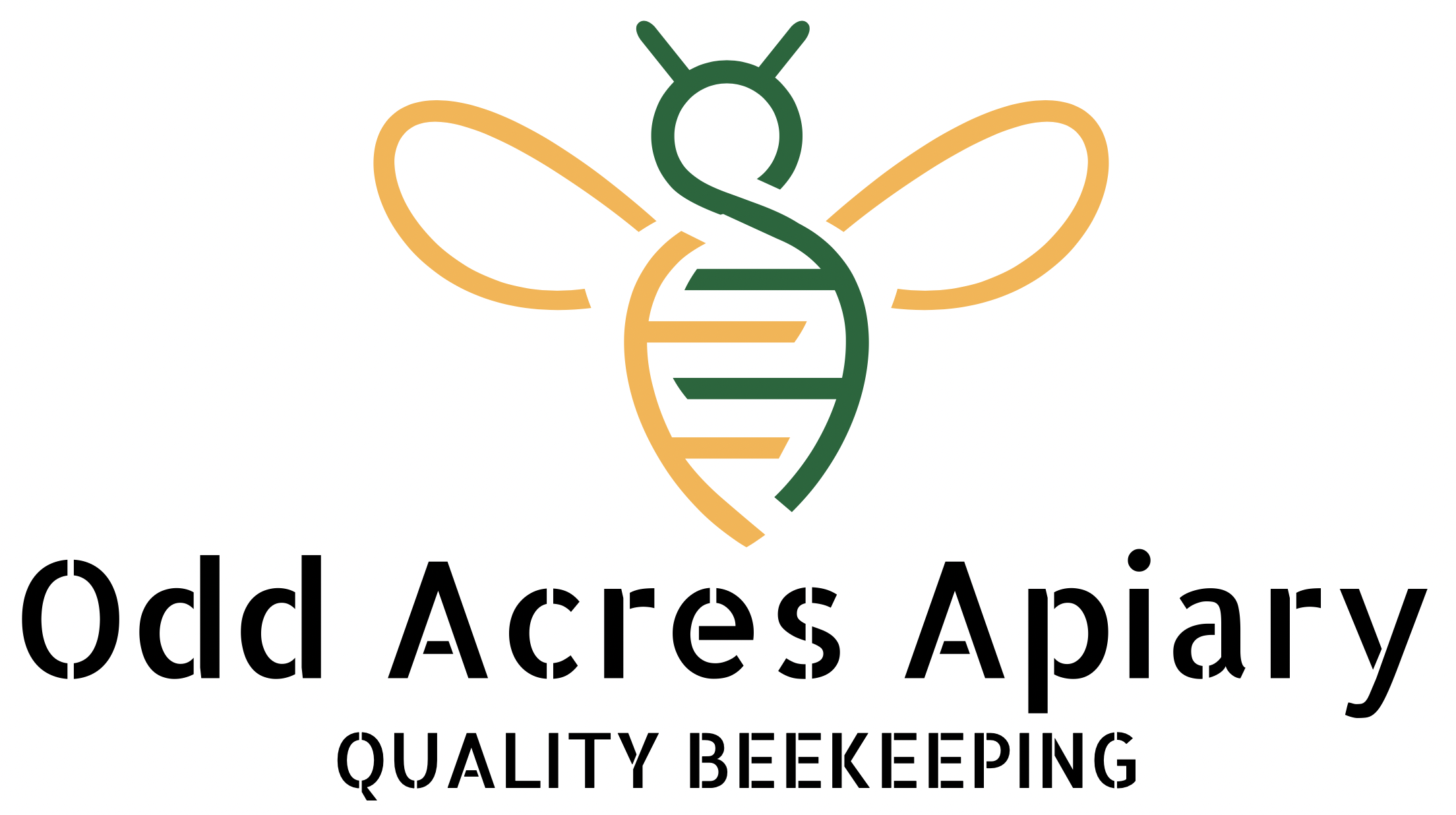
The Swarm Queen – Part 1
At first, it was a joke about me and the swarms in our family. I am fascinated with behaviours in humans and animals, and as I watch and learn about bees or insects as they are scientifically aligned, I somehow have a knack for swarms. Allow me to explain.
I am not avidly seeking out swarms everywhere I go; I find swarms fascinating to watch, as the results are impressive. Watching how a swarm can build a hive with their tools in a limited time is incredible. We also study swarms for the purposes of traits and behaviours.
Our family spotted our first swarm while riding bikes around a school parking lot. Peter was busy at one of our apiaries, and I had limited information on what to do, so I called him and asked, “Should we have a go?”. No, leave it was the decision.
Riding home, our family asked, “Why leave the swarm?” Explaining the conversation I had with Daddy and several toing-and-froing Q&A’s from the family, we decided, “Let’s do it!”
We grabbed the essential tools and equipment we could find at home, including our bee suits, threw it all in the car, and returned to the school parking lot to see the swarm, which was bigger now than when we had seen it earlier in the day. Our photograph for the blog illustrates the branch of the tree the swarm was collected on.
Applying common sense and remembering the basics Peter had shown me regarding handling bees in a public area and what to look for, I cordoned off an area around the tree to keep the cricketers playing nearby out of the way. After several attempts to get the branch in the correct spot for pruning, our family and I managed to get the swam into a nucleus box – yeah!
We called Peter and told him the great results – there were a few questions, and he decided to swing by on the way home to stay with the swarm and collect the last of the forages at dusk. I headed home with everything, including the family. That swarm proved to be one of our best performers.
Fast forward a few years, and I was at my swarm best again, knowing at a particular time of the year at home, the annual swarm ‘fly-by’ would soon occur.
Peter had not seen the annual fly-by before; I had seen the phenomenon six times prior. Peter laughs at my fly-by analogy, and getting him to place the swarm trap I prepared in one of our trees took some convincing.
I watched the daily temperatures, watched our hive in the backyard as a rough indicator for when the fly-by was due to happen and within two days of setting the swarm trap – Tada! We had caught the fly-by.
I was chuffed with my efforts; Peter thought I was creating more work! That swarm was a great producer, yet it died two seasons later – another lesson in understanding the genetics and behaviours of bees.
The following year, I was on a roll. Ready as ever for my annual swarm fly-by, Peter was not interested in appeasing me this time as his apiaries demanded his time. So, I kept monitoring the elements, including Peter, and on a good day, he helped me place the swarm trap in our trusty swarm-catching tree.
The next day, I was watering the garden and heard a high-pitch of activity near our trusty swarm-catching tree. I looked up, and voila! I’d caught the annual fly-by. This swarm was our most significant yet, having built out the swarm box with the wax comb in one day – beautiful work and so clean, creamy looking almost was the colour of the wax comb. This swarm is a stellar performer in the apiary too.
This season, Peter is on board with my annual swarm catch. It is not a challenging task; these bees swarm past our house yearly, proving to be of solid stock and interesting genetics. We are changing our swarm traps to lighter wooden models so they are easier to use and lift for me.
I am preparing early for the Odd Acres Apiary annual fly-by to see what DNA swarms our way this coming Summer.
![]()

